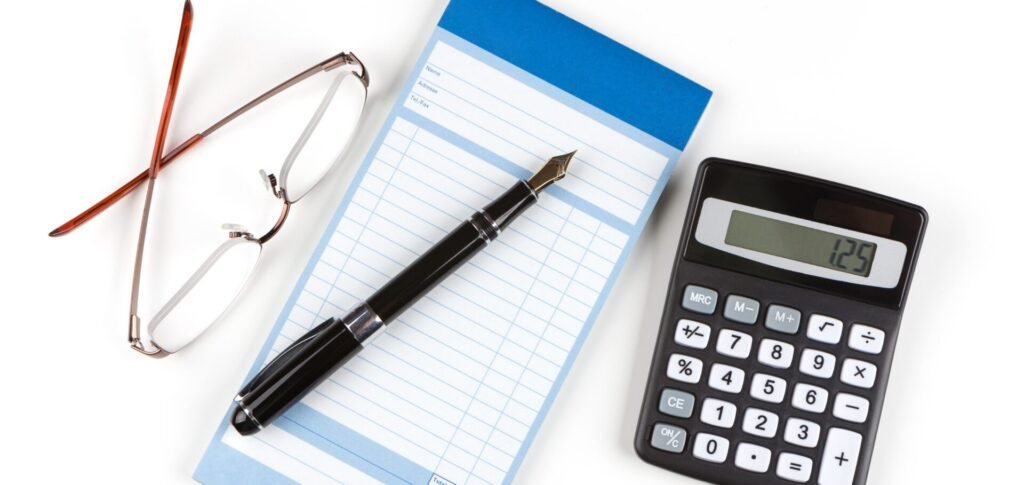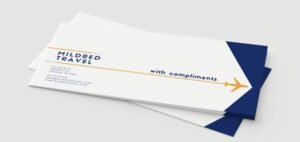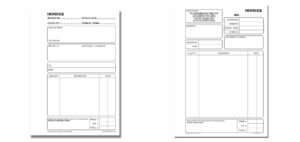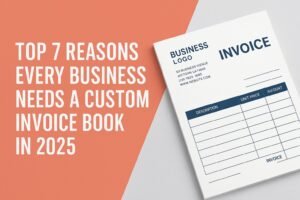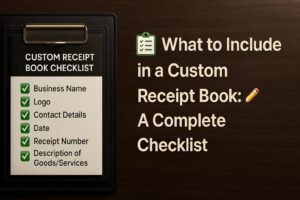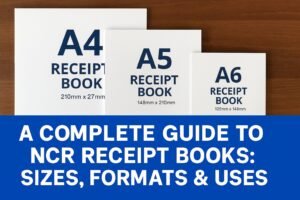When it comes to running a business, every detail counts—especially when it comes to customer-facing documents like receipts. A well-designed, personalised receipt book can set the tone for your brand, providing a professional touch that leaves a lasting impression. In this guide, we’ll walk you through the steps to design the perfect personalised receipt book for your business, ensuring it’s both functional and a reflection of your brand.
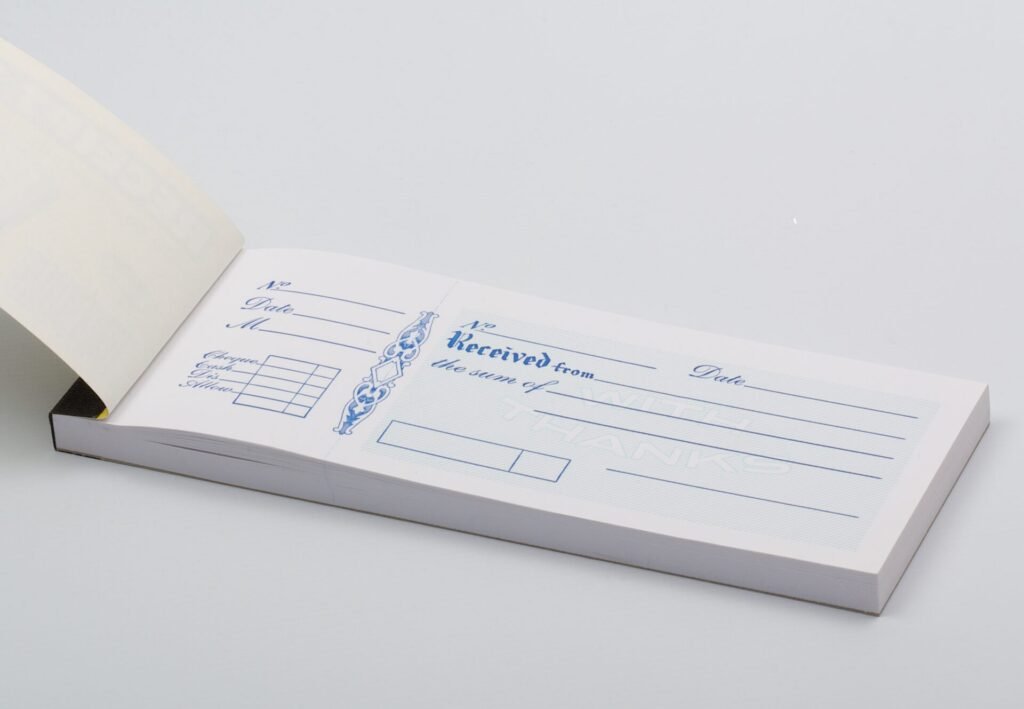
1. Start with Your Brand Identity
The first step in designing a personalised receipt book is aligning it with your business’s brand identity. Incorporating your logo, brand colours, and fonts into your receipt book helps to ensure that each transaction reinforces your brand. A consistent design across your business materials—from business cards to receipt books—creates a cohesive and professional image.
Key Tip: Choose colours that complement your logo, but ensure the text remains legible. Avoid overly bright or dark backgrounds that might make the receipt hard to read.
2. Include Essential Information
While it’s tempting to get creative, your receipt book’s primary purpose is to provide clear, necessary information to your customers. Make sure you include the following key details:
- Business Name & Logo: Display your company name clearly at the top. Your logo should appear prominently but not overpower the rest of the design.
- Contact Information: Ensure that your address, phone number, and email are listed in case customers need to get in touch.
- Tax Information: Include any tax identification numbers required for legal and financial purposes.
- Payment Details: Make sure there’s space to clearly indicate the payment method (cash, card, etc.) and the total amount, including VAT if applicable.
- Thank You Message or Call to Action: A small message of appreciation or a call to action (like visiting your website) adds a friendly touch.
Key Tip: The layout should be clean and not overcrowded. Prioritize clarity over creativity in this section.
3. Select the Right Layout
The layout of your personalised receipt book should ensure ease of use. Think about how your employees or customers will fill it out. Horizontal lines to guide handwritten entries are essential, but consider leaving enough space for longer entries such as customer addresses or detailed item descriptions.
A typical receipt book layout includes:
- Date of transaction
- Itemized breakdown of purchases or services rendered
- Space for customer signatures (if necessary)
Key Tip: Test the layout by printing a draft version. Ensure there’s enough space for all necessary information without making the design feel cluttered.
4. Choose Paper and Binding Options
Not all receipt books are created equal. The choice of paper and binding can affect the usability and durability of the receipt book. For a more professional feel, go for carbonless paper (NCR), which allows for multiple copies to be created without needing messy carbon paper. The top copy can go to the customer, while the bottom copy stays in your records.
As for binding, options like stapled or glued books allow for easy tear-away pages, but a spiral-bound option can be more durable and easier to use in the long run.
Key Tip: Always ensure that the paper quality is high enough to prevent ink from bleeding through multiple copies.
Also Read : What does NCR form stand for?
5. Add Custom Features
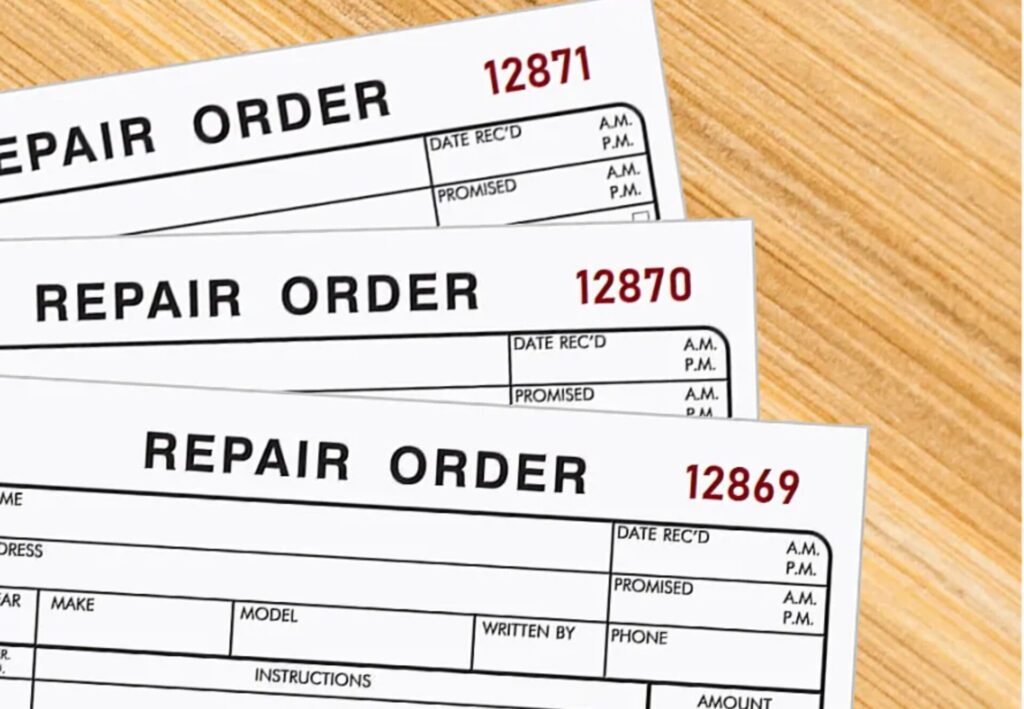
One of the biggest advantages of designing your own personalised receipt book is the ability to add custom features that cater to your specific business needs. You might want to include:
- Sequential Numbering: Helps track transactions and maintain organised records.
- Custom Fields: Specific fields for special instructions or internal notes.
- Perforated Pages: Easy-to-tear pages that help maintain a clean and professional look.
Key Tip: Think about how your receipt books are used on a day-to-day basis and incorporate features that make them more efficient.
Also Read : What is Sequential Numbering?
6. Ensure Compliance with Legal Requirements
Receipts are legal documents, and it’s crucial that they meet any necessary legal and tax regulations in your industry or country. This includes proper VAT registration numbers, business details, and any other tax-related information required by law.
Key Tip: Double-check with your accountant or legal advisor to ensure that your receipt book design complies with all regulations.
7. Work with a Professional Print Provider
Finally, to ensure the highest quality for your personalised receipt books, it’s best to work with a professional print provider. At DiscoverPrint, we specialise in producing bespoke, high-quality receipt books that are tailored to meet your business needs. From helping you finalise your design to delivering high-quality printed products, we make the process smooth and hassle-free.
Conclusion
A personalised receipt book is more than just a business necessity—it’s an extension of your brand and professionalism. By carefully considering design elements like layout, essential information, and custom features, you can create a receipt book that reflects your brand’s identity while ensuring it’s functional and easy to use.
At DiscoverPrint, we’re here to help bring your vision to life. Get in touch with us today to discuss how we can assist in designing and printing the perfect personalised receipt books for your business.
